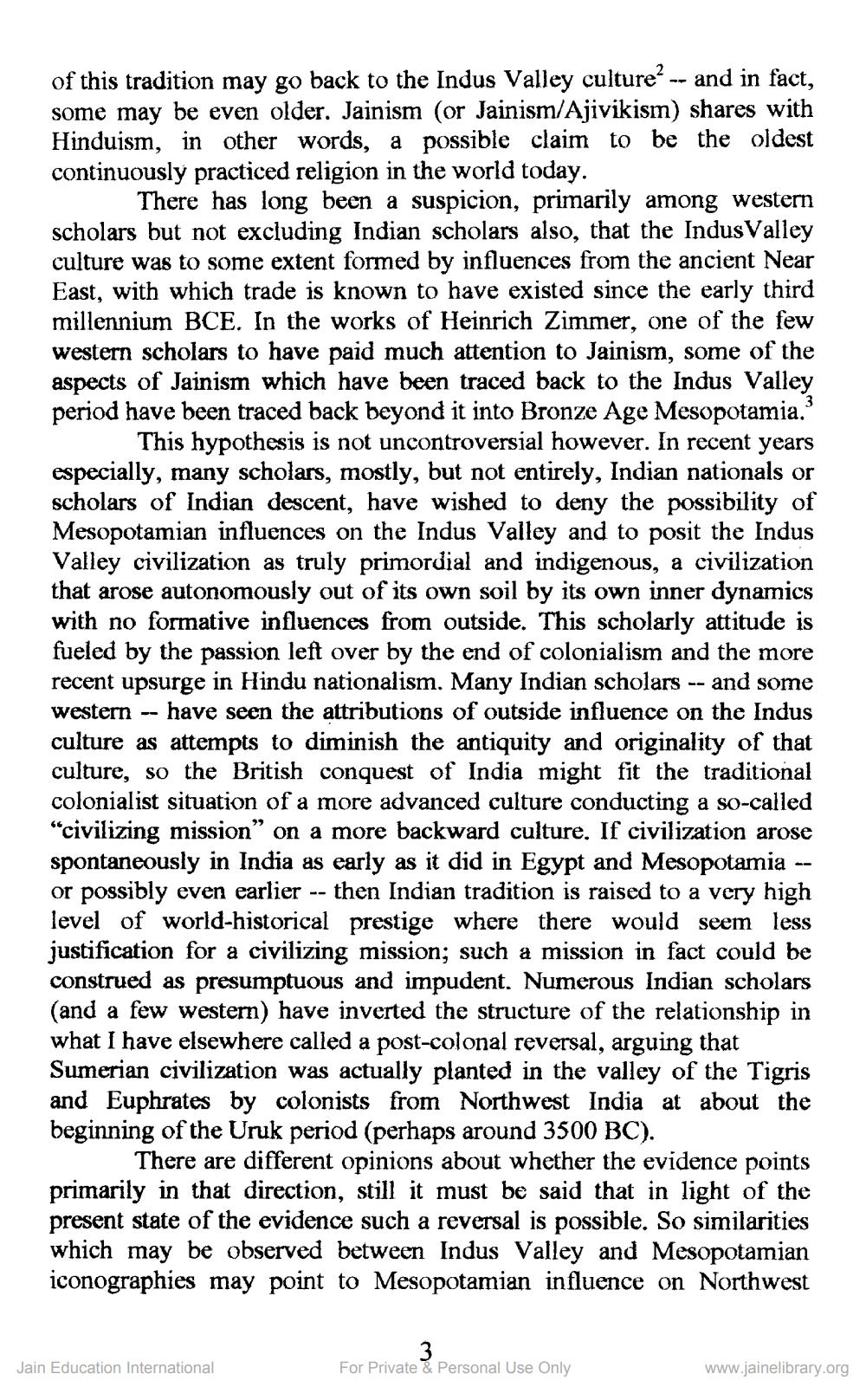Book Title: Jinamanjari 2002 04 No 25 Author(s): Jinamanjari Publisher: Canada Bramhi Jain Society Publication View full book textPage 7
________________ of this tradition may go back to the Indus Valley culture? -- and in fact, some may be even older. Jainism (or Jainism/Ajivikism) shares with Hinduism, in other words, a possible claim to be the oldest continuously practiced religion in the world today. There has long been a suspicion, primarily among western scholars but not excluding Indian scholars also, that the Indus Valley culture was to some extent formed by influences from the ancient Near East, with which trade is known to have existed since the early third millennium BCE. In the works of Heinrich Zimmer, one of the few western scholars to have paid much attention to Jainism, some of the aspects of Jainism which have been traced back to the Indus Valley period have been traced back beyond it into Bronze Age Mesopotamia." This hypothesis is not uncontroversial however. In recent years especially, many scholars, mostly, but not entirely, Indian nationals or scholars of Indian descent, have wished to deny the possibility of Mesopotamian influences on the Indus Valley and to posit the Indus Valley civilization as truly primordial and indigenous, a civilization that arose autonomously out of its own soil by its own inner dynamics with no formative influences from outside. This scholarly attitude is fueled by the passion left over by the end of colonialism and the more recent upsurge in Hindu nationalism. Many Indian scholars -- and some western -- have seen the attributions of outside influence on the Indus culture as attempts to diminish the antiquity and originality of that culture, so the British conquest of India might fit the traditional colonialist situation of a more advanced culture conducting a so-called "civilizing mission” on a more backward culture. If civilization arose spontaneously in India as early as it did in Egypt and Mesopotamia -- or possibly even earlier -- then Indian tradition is raised to a very high level of world-historical prestige where there would seem less justification for a civilizing mission; such a mission in fact could be construed as presumptuous and impudent. Numerous Indian scholars (and a few western) have inverted the structure of the relationship in what I have elsewhere called a post-colonal reversal, arguing that Sumerian civilization was actually planted in the valley of the Tigris and Euphrates by colonists from Northwest India at about the beginning of the Unuk period (perhaps around 3500 BC). There are different opinions about whether the evidence points primarily in that direction, still it must be said that in light of the present state of the evidence such a reversal is possible. So similarities which may be observed between Indus Valley and Mesopotamian iconographies may point to Mesopotamian influence on Northwest Jain Education International For Private & Personal Use Only www.jainelibrary.orgPage Navigation
1 ... 5 6 7 8 9 10 11 12 13 14 15 16 17 18 19 20 21 22 23 24 25 26 27 28 29 30 31 32 33 34 35 36 37 38 39 40 41 42 43 44 45 46 47 48 49 50 51 52 53 54 55 56 57 58 59 60 61 62 63 64 65 66 67 68 69 70 71 72 ... 76
